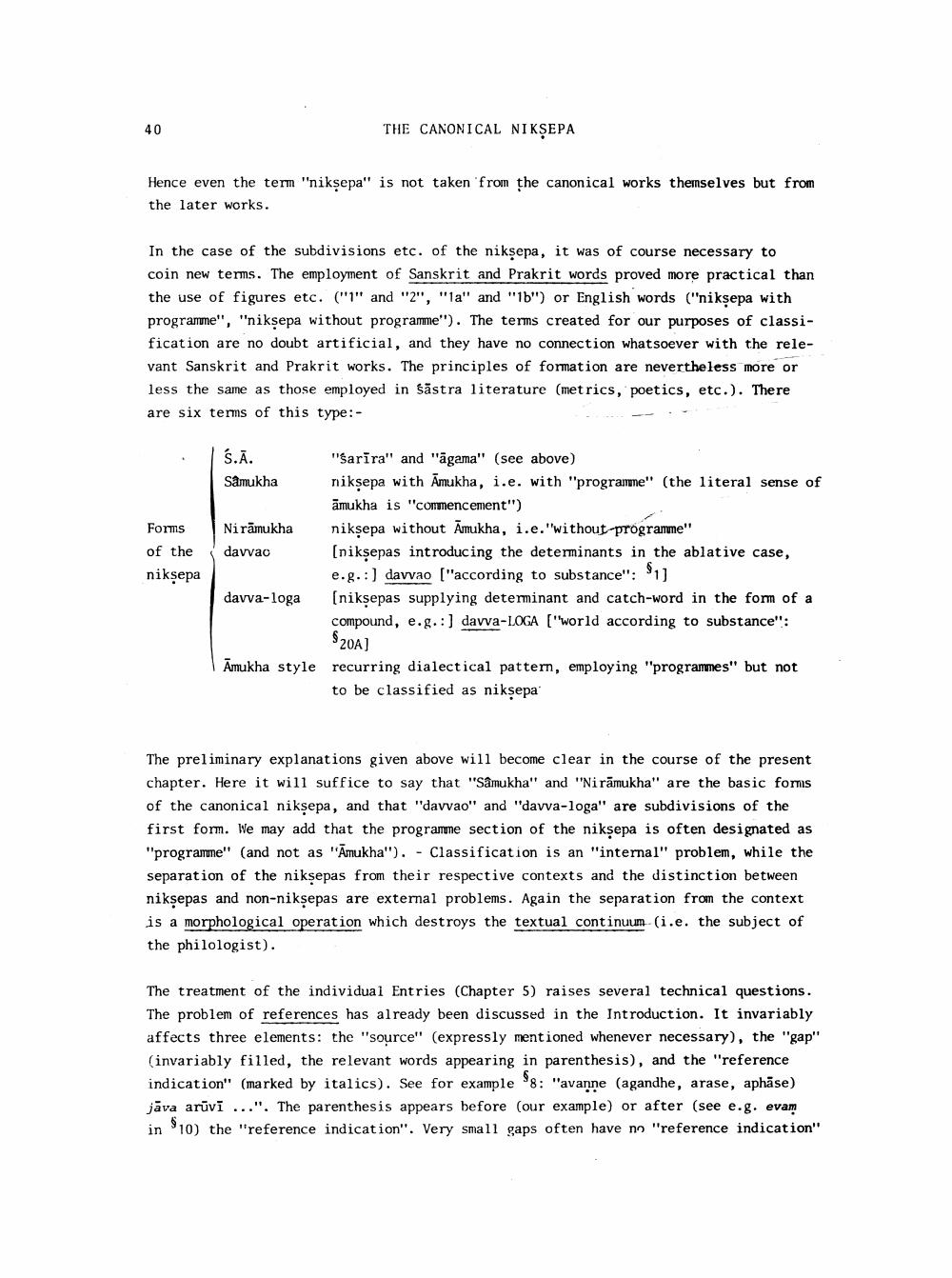________________
40
THE CANONICAL NIKȘEPA
Hence even the term "niksepa" is not taken from the canonical works themselves but from the later works.
In the case of the subdivisions etc. of the niksepa, it was of course necessary to coin new terms. The employment of Sanskrit and Prakrit words proved more practical than the use of figures etc. ("1" and "2", "la" and "16") or English words ("niksepa with programue", "niksepa without programme"). The terms created for our purposes of classification are no doubt artificial, and they have no connection whatsoever with the relevant Sanskrit and Prakrit works. The principles of formation are nevertheless more or less the same as those employed in sāstra literature (metrics, poetics, etc.). There are six terms of this type: -
S.A. Samukha
Forms of the niksepa
Nirāmukha davvac
"Sarira" and "āgama" (see above) niksepa with Āmukha, i.e. with "programme" (the literal sense of āmukha is "commencement") niksepa without Āmukha, i.e."without-programme (nikṣepas introducing the determinants in the ablative case, e.g. :) davvao ("according to substance: 91 (nikṣepas supplying determinant and catch-word in the form of a compound, e.g.:) davva-LOGA ("world according to substance":
davva-loga
$20A)
Āmukha style
recurring dialectical pattern, employing "programmes" but not to be classified as niksepa
The preliminary explanations given above will become clear in the course of the present chapter. Here it will suffice to say that "Sâmukha" and "Nirāmukha" are the basic fomis of the canonical niksepa, and that "davvao" and "davva-loga" are subdivisions of the first form. We may add that the programme section of the niksepa is often designated as "programme" (and not as "Āmukha"). - Classification is an "internal" problem, while the separation of the niksepas from their respective contexts and the distinction between niksepas and non-niksepas are external problems. Again the separation from the context is a morphological operation which destroys the textual continuum (i.e. the subject of the philologist).
The treatment of the individual Entries (Chapter 5) raises several technical questions. The problem of references has already been discussed in the Introduction. It invariably affects three elements: the "source" (expressly mentioned whenever necessary), the "gap" (invariably filled, the relevant words appearing in parenthesis), and the "reference indication" (marked by italics). See for example 98: "avanne (agandhe, arase, aphase) jāva arūvi ...". The parenthesis appears before our example) or after (see e.g. evam in $10) the "reference indication". Very small gaps often have nn "reference indication"




